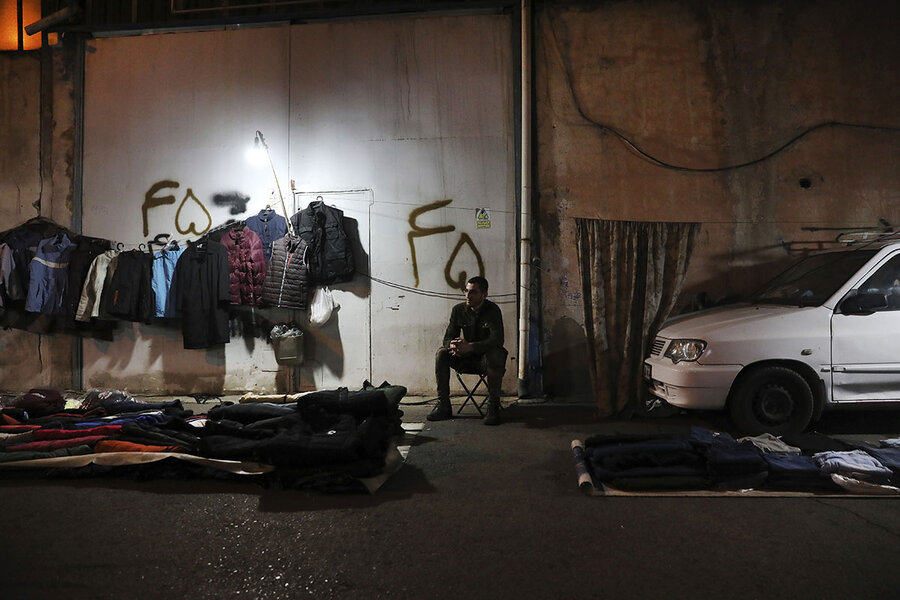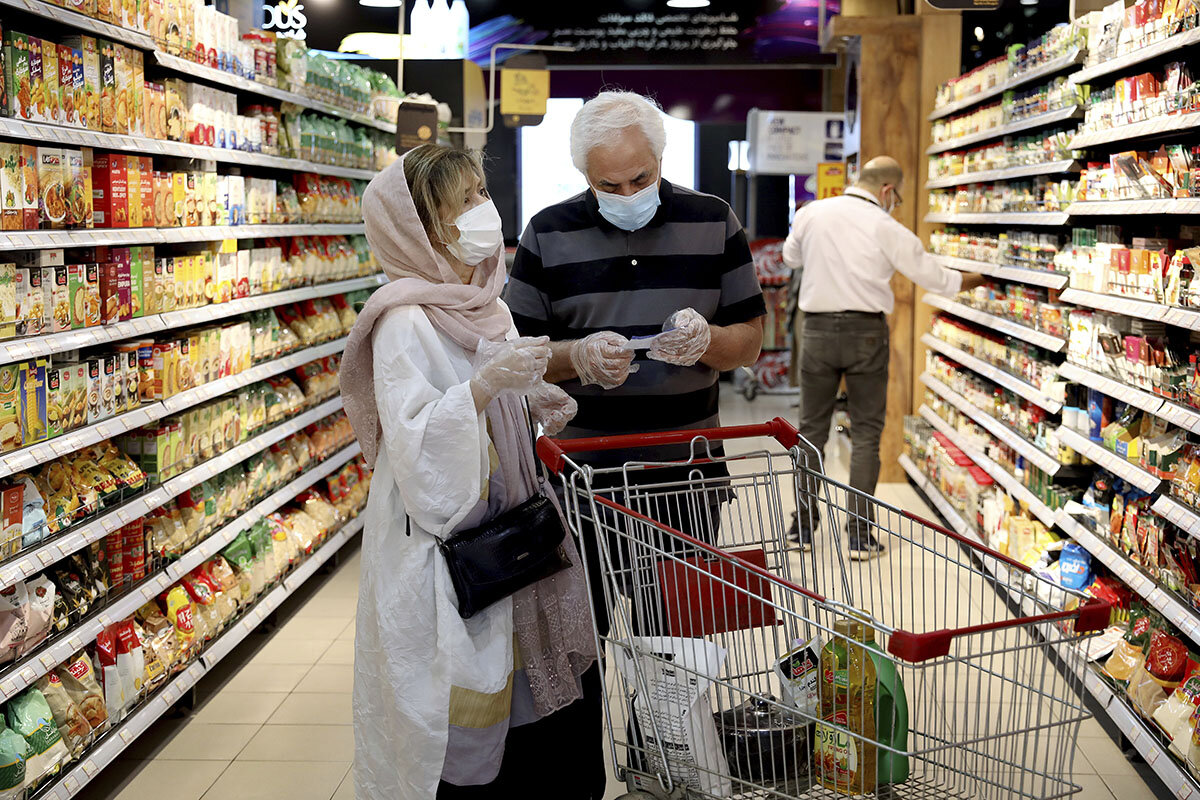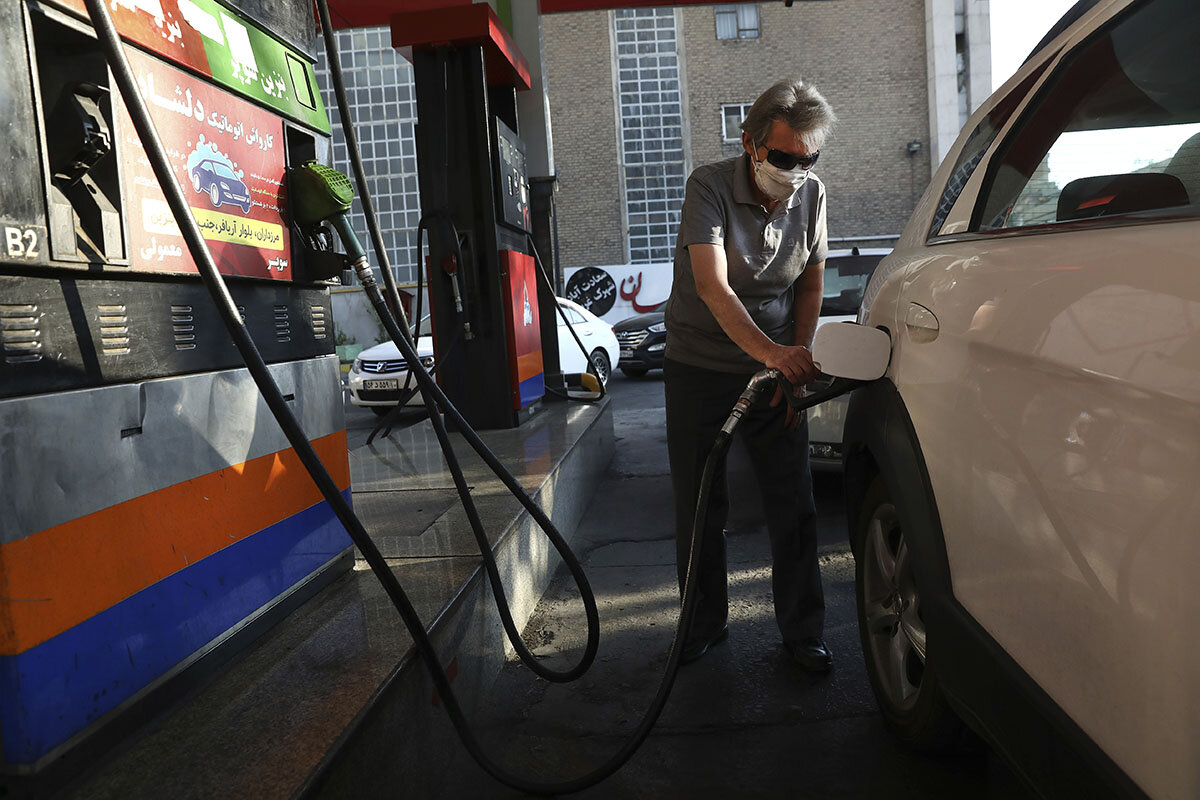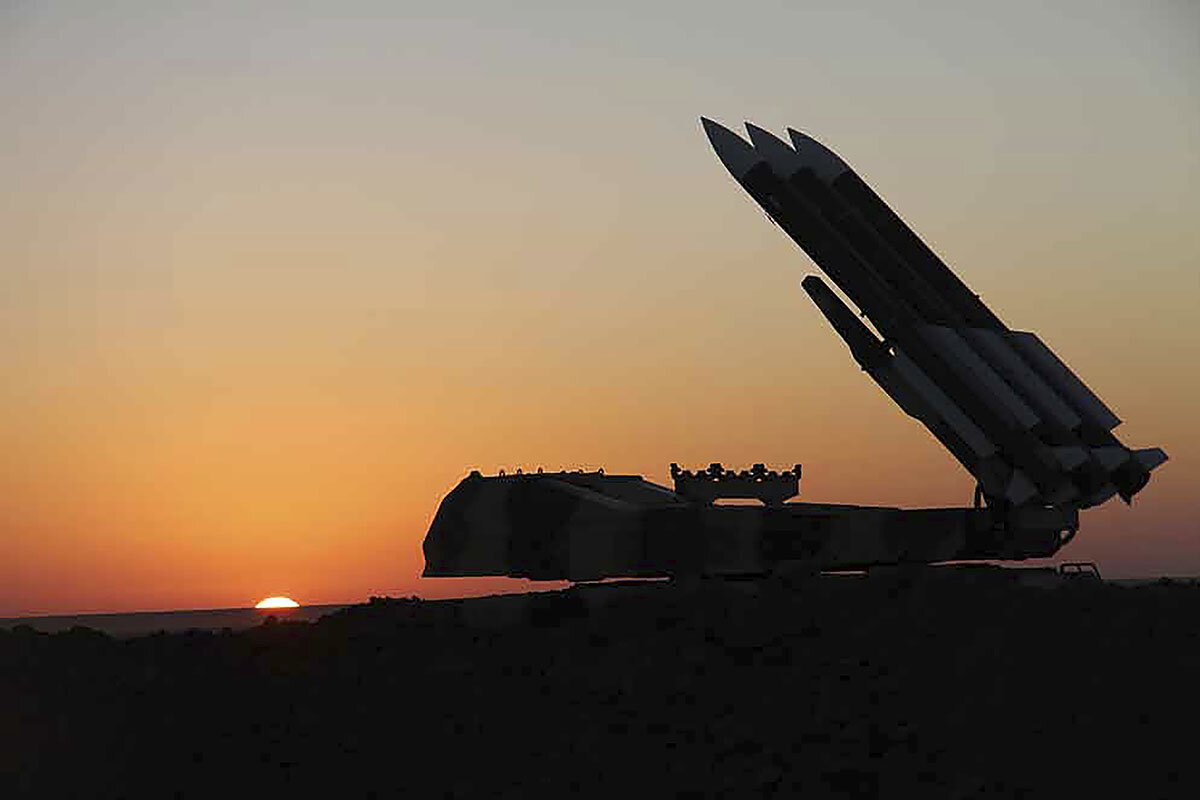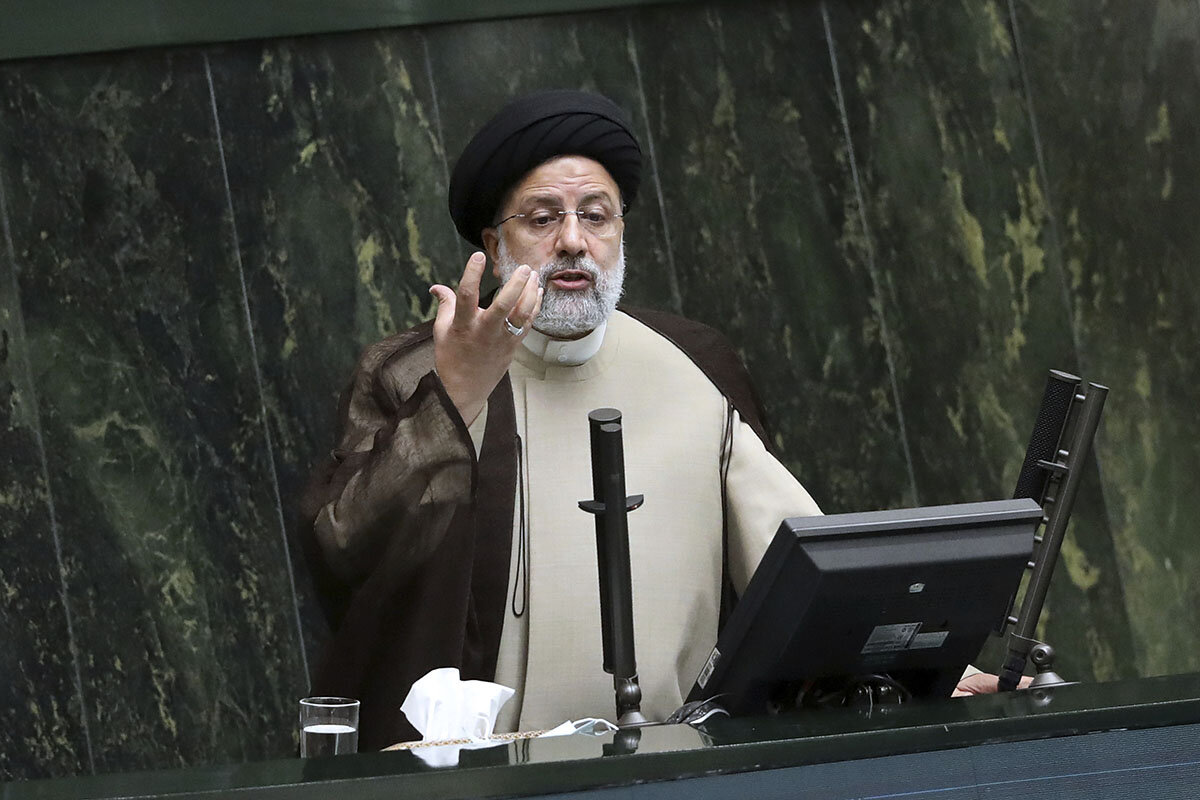‘Mental chaos’ in Iran: Is government helping people, or harming?
Loading...
| London
For Iranians overwhelmed by economic, health, and political hardships, the historical irony on display at the sprawling Behesht-e Zahra (Zahra’s Paradise) cemetery, Tehran’s largest, could not be more acute.
It was there that Ayatollah Ruhollah Khomeini, upon his return from exile in February 1979 to launch Iran’s Islamic revolution, promised Iranians a “rich, satisfying life,” and told them to expect more than new homes, free water and electricity, and free bus rides.
“Don’t be satisfied just by those,” the charismatic Shiite cleric declared. “We will exalt your souls.”
Why We Wrote This
The pandemic has made it hard for many governments to protect their citizens’ mental well-being. In Iran, economic collapse and political repression make the task even more complex.
Yet 43 years later, from Behesht-e Zahra and numerous other cemeteries across the country, reports emerged in December of a rash of thefts born of economic desperation so severe that thieves are stealing gravestones and reselling them at a discount after grinding off the names of the deceased.
Grim as that cemetery desecration may be, for Iranians it is just one more telltale sign of a broader, yearslong decline from the dream of exalted souls. With few expectations of government help, as the economy disintegrates, other signs include a new spike in the national suicide rate and a surge in demand for counseling services.
In December, the head of Tehran’s coronavirus task force, Dr. Alireza Zali, made a headline-grabbing announcement. One out of every 3 citizens now grapples with some form of “mental disorder,” he said.
“Given the disastrous inflation, poverty, unemployment, suppression, and restrictions on freedom ... such mental disorders are no surprise,” responded Iranian Nobel Peace Prize winner Shirin Ebadi, who now lives in exile, on her social media channel. “These figures just demonstrate how critical the situation in Iranian society has become.”
“To promote mental health in Iran, people need to feel valued, that we are accepted by society,” said Saba Alaleh, a clinical psychologist who left Iran in September.
“Unfortunately, we see that in Iran ... everything has to be within the structure of the ruling regime,” said Ms. Alaleh, speaking from Turkey to a recent online panel organized by the Washington-based Middle East Institute (MEI). “In such a repressive environment, I lose my individuality and my self-respect is diminished. And losing my self-esteem, my mental chaos will increase.”
Every nation in the world has felt the psychological bite of COVID-19. A study of 204 countries published by The Lancet last October, for example, found a pandemic-related global increase of more than 25% in both “major depressive” and anxiety disorders in 2020.
On the pandemic front, the Iranian authorities in fact won praise last year from the World Health Organization for adopting “innovative approaches in essential mental health services,” which implemented “best practices from around the world.”
Within three weeks of the first COVID-19 cases being detected, the WHO noted, Iranian health officials had set up a national help line offering “trained mental health staff to provide individualized service,” which answered an average of 5,130 calls each day during the first nine months of the pandemic.
But beyond COVID-19, Iran’s misery has been deepened by a unique constellation of harsh U.S.-led sanctions, government economic mismanagement, drought, and a regime that is widely seen not as a problem-solver, but as adding to the suffering.
The array of pressures on Iran may, in fact, make the country’s mental health landscape unique, and the combined result is what some analysts call a growing “culture of sadness.”
“Countries can go through depression,” Dr. Mojgan Hakimi, chair of the department of psychology at Touro College in Los Angeles, told the MEI panel. But “policies can make a difference,” she added. “Freedom can make a difference.”
Signs are emerging that political hard-liners, who now control every lever of state power, are beginning to recognize the severity of the problem, even if they have not yet prioritized finding solutions.
Top officials have acknowledged widespread hardship, offering cash handouts and promising to fix the economy.
Still, political disillusionment has a key impact on the public’s mental health, says Farshad Momeni, director of the nongovernmental Institute of Religion and Economic Studies.
“As the people’s relationship with the ruling system worsens, we face a trust deficit, instability, dishonesty, hoarding, decline of morality, addiction, corruption, suicides, psychological problems, mental issues, growing divorce rates, and so on,” Mr. Momeni told officials of the research arm of the governmental Social Security Organization in November.
“Our [government] survey and monitoring system ... fails to see the most obvious phenomena,” he warned.
In Iran today, inflation, poverty, a sense of hopelessness, and suicide rates are all on the rise. Indeed, official statistics show that the ranks of those in “absolute poverty” have doubled in the past three years to include 30 million Iranians – more than one-third of the population.
The annual inflation rate had reached 43.4% by last month, according to government figures, and some food prices had risen by nearly 80%.
In Tehran, one vivid example of the scale of want can be found at a big fruit and vegetable market, where grocers put damaged and expiring produce on sale at a steep discount at 7 p.m. Every evening, shoppers stand in long lines to take advantage of the cheap prices.
“To tell you the truth, I am really puzzled with how people cope with this,” says an Iranian journalist with decades of experience, who was astonished when introduced to the market by a man living in the basement of his building.
He notes recent statistics from the Central Livestock Union that meat consumption has fallen in the past year by 50%, while sales of dairy products have dropped by nearly 60% in the same period, thanks to price rises of 70%.
“That also affects the mental situation of people, that they can’t buy what they used to buy before,” says the journalist, who asked not to be named. So do fears of joblessness, he says, at a time when unemployment rates have topped 10%.
The widening financial hardship is increasingly visible in daily life: People are renting rooftops or living in tents; a growing number have turned to scavenging. In recent weeks, Iranian media have carried reports on how some Tehranis – not those who are destitute or have addiction problems, but employed ordinary people who can no longer afford to pay a rent – sleep every night while riding public bus routes back and forth across the city.
“The economy in Iran is everything, and mental health is seriously connected to it,” says a professional photographer who has chronicled Iran’s battles with COVID-19 and other trials over the past two years, who asked to remain anonymous.
“People felt they were at the edge of this nightmare, that they opened their eyes and saw this unknown, dead world,” he recalls. “Iranians ... were not prepared for this situation.”
One result: Suicides have increased, leaping by 29% in the early months of the pandemic compared with a year earlier, according to the official Statistics Center of Iran, and the annual trend has remained upward, though no recent government figures are available.
Iranians have also shown their anger at the government’s failure to stem the country’s economic slide, taking to the streets to join protests that are sometimes violently put down, leaving hundreds dead since 2018.
The latest round of teacher protests erupted after President Ebrahim Raisi presented his budget last month. He proposed a 240% increase in spending on the Islamic Revolutionary Guard Corps, and a 56% increase for state-run media, while offering only a 10% wage hike to teachers and other government workers.
It all adds up to more psychological pressure.
The increased availability of COVID-19 vaccine has eased some of the strain, after a slow rollout and the initial refusal by Iran’s supreme leader, Ayatollah Ali Khamenei, to permit Western-made vaccines. But the coronavirus is not the only problem.
“It is a bit different from the past; the seriousness of the situation seems to be created by the people in power,” says the journalist. “Even Khamenei has mentioned that the trust between the people and the regime has been damaged.”
The new hard-line President Raisi has made some populist moves by visiting provinces shunned by his predecessor, Hassan Rouhani. They are “an attempt to bridge this growing gap that many officials now acknowledge,” says the journalist.
So was a promise of “good news” by the government’s economic affairs chief, Mohsen Rezaei, which turned out to be a welfare card worth only $8 per month that has still not been introduced.
Iran’s parliament, too, has been criticized for ignoring the multiple crises and instead focusing on religious issues and further restricting freedoms. It recently found time to forbid the import of musical instruments and sunglasses.
Critics say such behavior illustrates how out of touch Iran’s leaders are, and how unable they are to improve economic conditions, which might help improve Iranians’ mental health.
“They’ve got other priorities,” Alex Vatanka, an Iran expert at MEI, told the recent MEI panel.
“They are engaged in the battle of ‘all time’ against the United States; they have a [regional] foreign policy project that they want to finish.
“And in the meantime,” he added, “they are forgetting about the homeland ... about the majority of Iranians who really have issues that they need to have provided for at home.”




